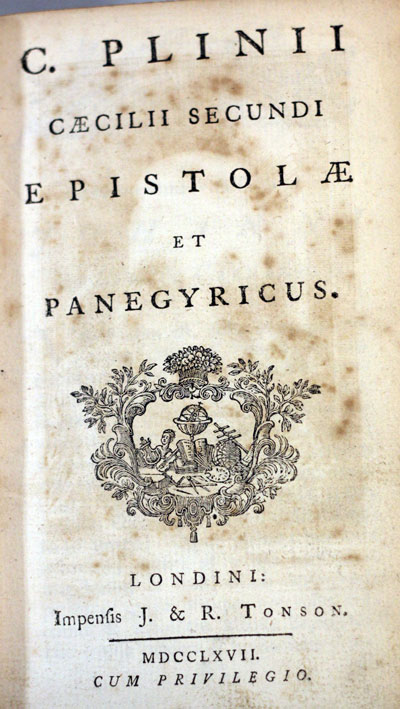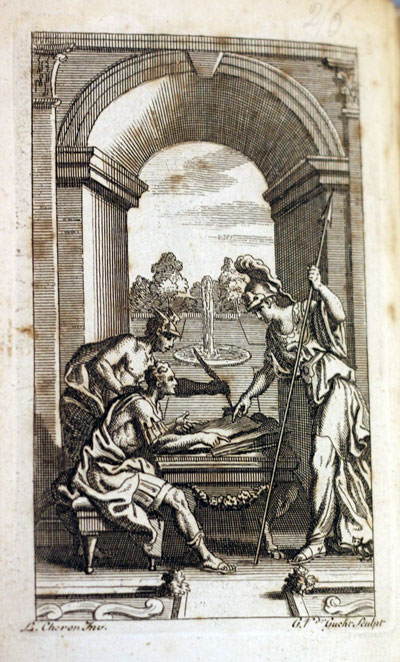Title: EPISTOLAE ET PANEGYRICUS
Author: Gaius Plinius Caecilius Secundus
Publisher: J & R Tonson, London, 1767.
Condition: Unattractive cloth binding, rubbed and worn. Internally good, binding sound. Engraved frontispiece. 324pp + index.
Note: all text is in Latin.




